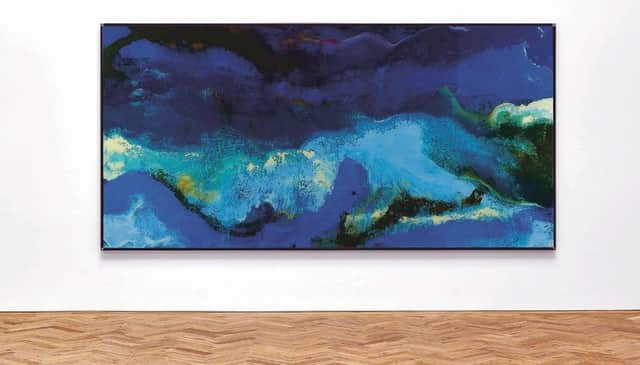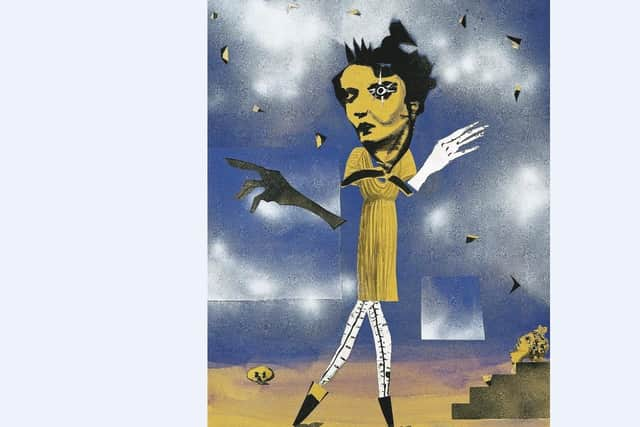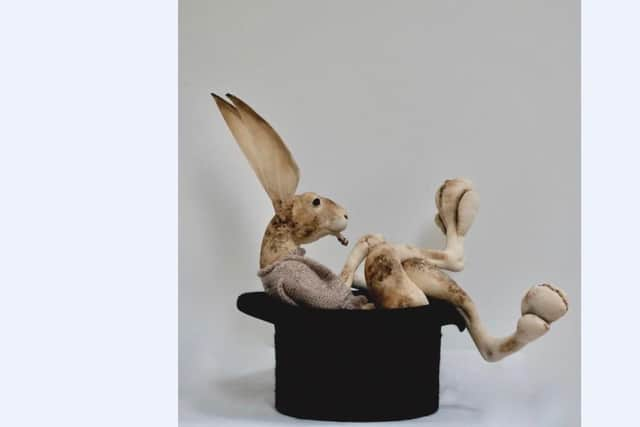Art reviews: Home, Ingleby Gallery | Summer Exhibition, Union Gallery | Alison McWhirter, Smithy Gallery


Summer Exhibition, Union Gallery, Edinburgh ****
Alison McWhirter: Painted Love, Smithy Gallery, Blanefield ***


Lockdown has made all of us focus more closely on what is around us. Galleries which would normally be travelling to promote artists internationally have found their movements curtailed, and the absence of the festival means that, for this year at least, the world is not coming to Edinburgh in August.
Advertisement
Hide AdEdinburgh’s Ingleby Gallery has reopened (by appointment) with a showcase of four Scottish artists which they had planned to take around the world. However, in a silver-linings sort of way, the work of Andrew Cranston, Kevin Harman, Moyna Flannigan and Katie Paterson is looking rather splendid at home in Barony Street.
Cranston’s work is always interesting: evocative scenes often painted on the covers of old hardback books, like fragments of narratives. He draws on, and plays with, a rich fund of personal and collected imagery. The naked couple holding hands in Nice and Sleazy could be Adam and Eve, but there’s something about the man’s moustache and the lurid colours that suggest something less paradisal. The man in Exile, in his exotic chair with his cat, could be Stevenson in Samoa, but might not be. Either way, he conveys a poignant mix of exoticism and melancholy.
There’s a similar feeling in Every day I look at the world from my window – at more than 2m tall, a dramatic departure from Cranston’s book-sized works. This man, his dog beside him, looks out rather forlornly from the window of his modernist mansion while behind him a woman does yoga exercises, his lostness accentuated by the size of the work in which he is placed. Starry night with Donkey (August 1974), on a similar scale, might be a painting of a memory; the donkey is pale against the night-time paddock while Van Gogh-esque stars explode in the sky.


In her most recent work, Moyna Flannigan has shifted away from figurative painting to working in collage, cutting and pasting her drawings and adding ink, gouache and spray paint. However, she is still concerned with representations of women, their self-consciousness and awkwardness conveyed perhaps even more expertly in the language of collage.
Kevin Harman’s paintings are made by salvaging discarded double glazing and household paints and manipulating the paint between the layers of glass. His large work Where water breaks its silence is impressive in its scale alone, evocative of a churning seascape.
The show is completed by three of Katie Paterson’s Ideas works, short, haiku-like texts in silver type which describe projects she has made, hopes to make, or which are impossible to make (further Ideas line the corridor in the NOW exhibition, just reopened at Modern One). The more impossible they appear (“The universe rewound and played back in real time”), the more wistful they sound, existing only in her imagination – and now ours, too.
Advertisement
Hide AdThe Union Gallery has also had to re-jig its exhibition programme, replacing its festival plans with a mixed summer show highlighting a number of homegrown artists. There are fine still lifes by Ann Oram, whose superb use of colour surely deserves a comparison to the Scottish Colourists, flower paintings by leading watercolourist Jenny Matthews, working both traditionally and experimentally, using collage, and atmospheric landscapes by Hazel Cashmore. And don’t miss the postcard-sized paintings of Tadeusz Deregowski on the stairs.
But the discovery of this show is the textile sculpture of Julia Levander Drew, currently stopping pedestrian traffic outside the gallery window in Drumsheugh Place. Drew, who is Swedish and lives in the Highlands, has rarely shown in galleries at all, but has built up a following online with her “faux taxidermy” sculptures of animals made from recycled materials.
Advertisement
Hide AdA thoughtful-eyed antelope head looks down at us, next to a woolly ram’s head with a mouse burrowed into its fleece. A hare takes a cigarette break sitting in a top hat, big feet splayed, cigarette drooping from its mouth.A monkey in a dirty T-shirt looks at us sadly while waiting to clash a pair of cymbals (which, if you inspect them closely, are pierced through his undeniably human-looking hands). Superbly crafted, charming and in some cases a little disturbing, they hit a note which is entirely original.
The paintings of Alison McWhirter, whose new show, Painted Love, is at the Smithy Gallery in Blanefield, strikes a fine balance too. The prominent reds and pinks, titles such as Intersection of Love and the presence of both hearts and flowers (though not in the same picture) might indicate an excess of sentiment, but this she adeptly avoids.
Her paintings, often of flowers, balance bold, lively brushstrokes and a kind of formalism. Superstar, Peace Rose and Sunflower has a formal clarity in its simple composition and warm taupe background. Vases of flowers are reduced to series of geometric shapes in a way that makes one aware of the surprising geometry of a rose. Even viewed online, the thick impasto takes on a sculpted quality. A handful are entirely abstract, instinctive daubs and swirls of candy colours.
Not every painting is equally successful – for me, the use of “lamp black” as a background is too severe – but the best show an instinctive understanding of colour and a style which combines both spontaneity and formal rigour. Mostly painted during lockdown, these works have an exuberance which feels very welcome in these troubled times.
Home runs until 19 September; The Union Gallery’s Summer Exhibition until 31 August; Alison McWhirter until 13 September
A message from the Editor
Thank you for reading this story on our website. While I have your attention, I also have an important request to make of you.
Advertisement
Hide AdThe dramatic events of 2020 are having a major impact on many of our advertisers - and consequently the revenue we receive. We are now more reliant than ever on you taking out a digital subscription to support our journalism.
To subscribe to scotsman.com and enjoy unlimited access to Scottish news and information online and on our app, visit https://www.scotsman.com/subscriptions
Joy Yates
Editorial Director